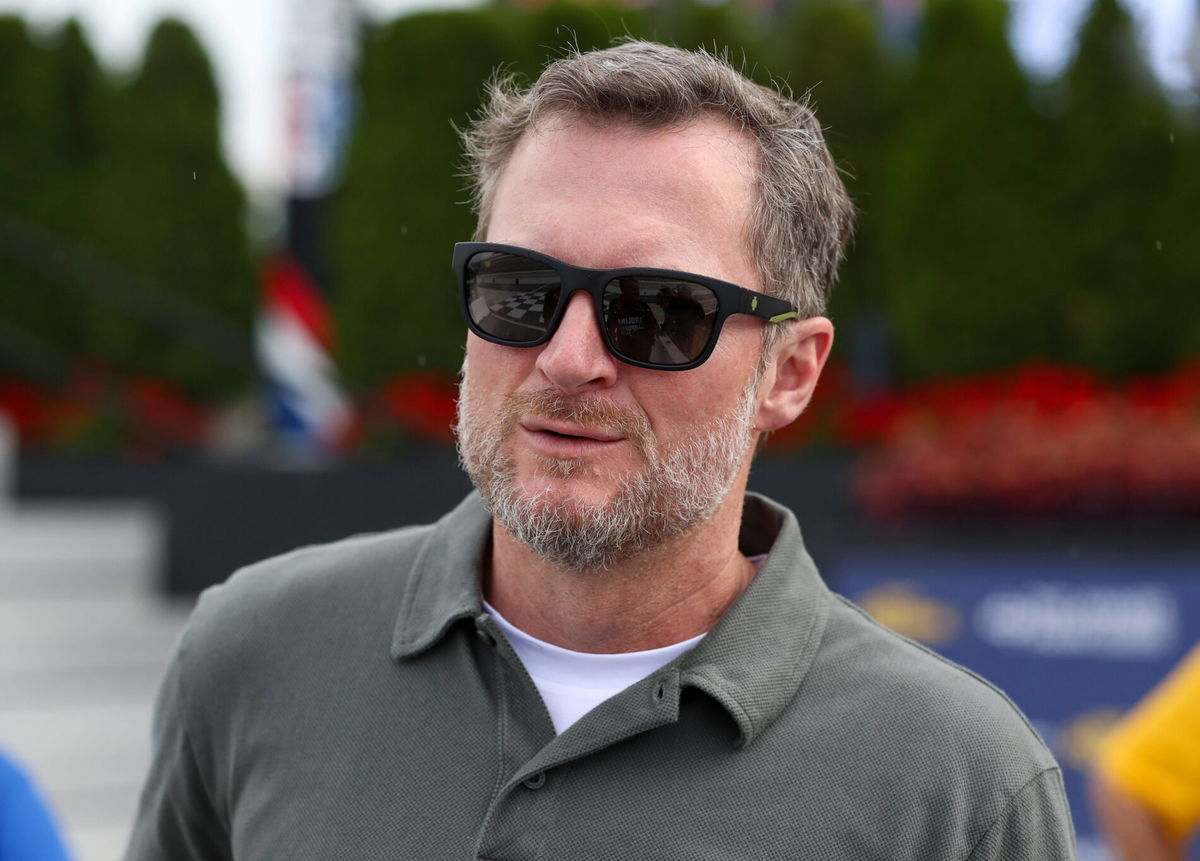
Imago
NASCAR, Motorsport, USA Xfinity: NASCAR Xfinity Series Race at Dover Jul 19, 2025 Dover, Delaware, USA NASCAR Xfinity Series owner Dale Earnhardt Jr. looks on from pit road during the BetRivers 200 at Dover Motor Speedway. Dover Dover Motor Speedway Delaware USA, EDITORIAL USE ONLY PUBLICATIONxINxGERxSUIxAUTxONLY Copyright: xMatthewxO Harenx 20250719_tcs_bm2_067

Imago
NASCAR, Motorsport, USA Xfinity: NASCAR Xfinity Series Race at Dover Jul 19, 2025 Dover, Delaware, USA NASCAR Xfinity Series owner Dale Earnhardt Jr. looks on from pit road during the BetRivers 200 at Dover Motor Speedway. Dover Dover Motor Speedway Delaware USA, EDITORIAL USE ONLY PUBLICATIONxINxGERxSUIxAUTxONLY Copyright: xMatthewxO Harenx 20250719_tcs_bm2_067
Back in the day, NASCAR practice sessions felt like mini-races. Hours on track, plenty of adjustments, and endless notes for teams to carry into race day. Fast forward to now, and the sport looks a whole lot different. Since 2022, cost-saving rules have chopped practice time down to quick-hit sessions: 15–20 minutes for Cup, maybe a little more for Xfinity and Trucks. Add in the group practice format, where only chunks of the field hit the track at a time, and suddenly practice feels less like preparation and more like a scramble.
Watch What’s Trending Now!
Sure, the system keeps budgets in check, but it also leaves rookies scrambling for laps and makes it tough for fans and broadcasters to measure true speed. And that’s where the latest garage buzz comes in, with none other than Dale Jr. sharing his thoughts on the issue.
ADVERTISEMENT
The limited practice format receives driver pushback
Dale Earnhardt Jr. has once again ignited debate in the NASCAR garage by voicing his support for expanding practice time, especially in the Xfinity and Truck Series. On his Dale Jr. Download podcast, Earnhardt shared what he’s been hearing behind the scenes: “Also hearing a little rumor there could be a little more practice back on the schedule next year. I think that I’m hearing this more so in Xfinity that there’s just conversations around, should we… have more weekends, there are more practice.”
His comments reflect widespread frustration that today’s strict, abbreviated practice structure isn’t preparing young drivers for race day. Currently, drivers often get just 15–20 minutes of practice before qualifying. For newcomers or competitors adjusting to unfamiliar tracks, it’s hardly enough.
Dale Jr. explained, “We’ve got a lot of guys that are going into these cars that haven’t driven them before, that are going to race tracks they’ve never raced before, and they’re getting 10, 20 minutes of practice.” That dilemma has already surfaced with international entrants like Shane van Gisbergen (a road-course driver), who admitted that limited prep made it difficult to get comfortable with the Next Gen car (on ovals) before races began. The lack of repetition leaves rookies essentially learning on the fly.
ADVERTISEMENT
Beyond duration, the current format’s use of group practices has also drawn criticism. Spotter TJ Majors didn’t mince words: “I don’t like the group stuff in Cup. I just think it should be an hour. Let everybody practice the same time.” Earnhardt agreed, noting the fairness issue: “The track changes. It does. First group runs a certain speed, then the track slows down, and it’s hard to really know who’s good and who isn’t.”
The track changes over time mainly due to temperature shifts and rubber buildup. As cars run laps, they deposit rubber on the racing line, which improves grip and speeds up lap times. This is called “rubbering in.” However, temperature plays a significant role too.
ADVERTISEMENT
As the track heats up from the sun, it can become more slippery since oils rise to the surface, reducing tire adhesion. Conversely, cooling can harden tires, lessening grip. Together, these factors cause track conditions to evolve during a session, making it difficult to compare lap speeds between early and late runs
Fans and broadcasters have echoed these frustrations, emphasizing that group practices muddy storylines by preventing consistent comparisons across the field. For both veterans and rookies, the push for longer, unified sessions is about more than convenience. It’s about ensuring high-quality racing and genuine competition.
Dale Earnhardt Jr. also expressed surprise at the growing momentum within NASCAR’s Playoff Format Committee toward potentially abandoning the playoff system in favor of a full-season points championship.
ADVERTISEMENT
Dale Jr. surprised by playoff committee’s stance
On the latest episode of The Dale Jr. Download, he revealed, “At the beginning of the year, the mere mention of a full-season points deal was pretty taboo, kind of early on that.” This reflects an evolving mindset among committee members who once saw reverting to the pre-2003 format as unrealistic.
Earnhardt explained that early in 2025, polls showed most committee members favored continuing the playoff format, with only a handful supporting the older full-season system. Yet as the year progressed, frustrations mounted over how the playoff’s elimination rounds can overshadow consistent performance throughout the entire season. He said, “Basically, the results that we took in February in the first poll saying yes, think a multiple would be good… and then very few 36 race full season that was saying full season is best.”
ADVERTISEMENT
Drivers and media voices have also chimed in with support for the idea, endorsing a championship that rewards endurance and consistency rather than a winner-take-all finale. Christopher Bell, a vocal advocate for the change, echoed Earnhardt’s stance, stating, “I think there’s only one true, legitimate champion crowning format and that’s to count every race… I think that 36 races are full points for the entire year, and that is the best way to go.”
NASCAR’s leadership has acknowledged the debate but plans to withhold any formal decisions until after the conclusion of the 2025 season in November. Nonetheless, with influential voices like Dale Jr.’s pushing for a return to NASCAR’s “Golden Era” points system, this potential shift could redefine how the sport crowns its champion, emphasizing season-long excellence over playoff drama.
ADVERTISEMENT
ADVERTISEMENT
ADVERTISEMENT

